Even as the seaplanes that battleships had traditionally carried were being retired in the late 40s, the need for battleship-based aircraft hadn't gone away. If anything, it had grown as the battleships focused more on shore bombardment. While fire-control radar had largely removed the need for aerial spotters when shooting at ships,1 it couldn't easily distinguish a shore target from the surrounding terrain. For that, aerial spotters were still needed. To fill this niche, the US Navy2 turned to the helicopter, which had emerged in the closing days of WWII and would revolutionize naval aviation.
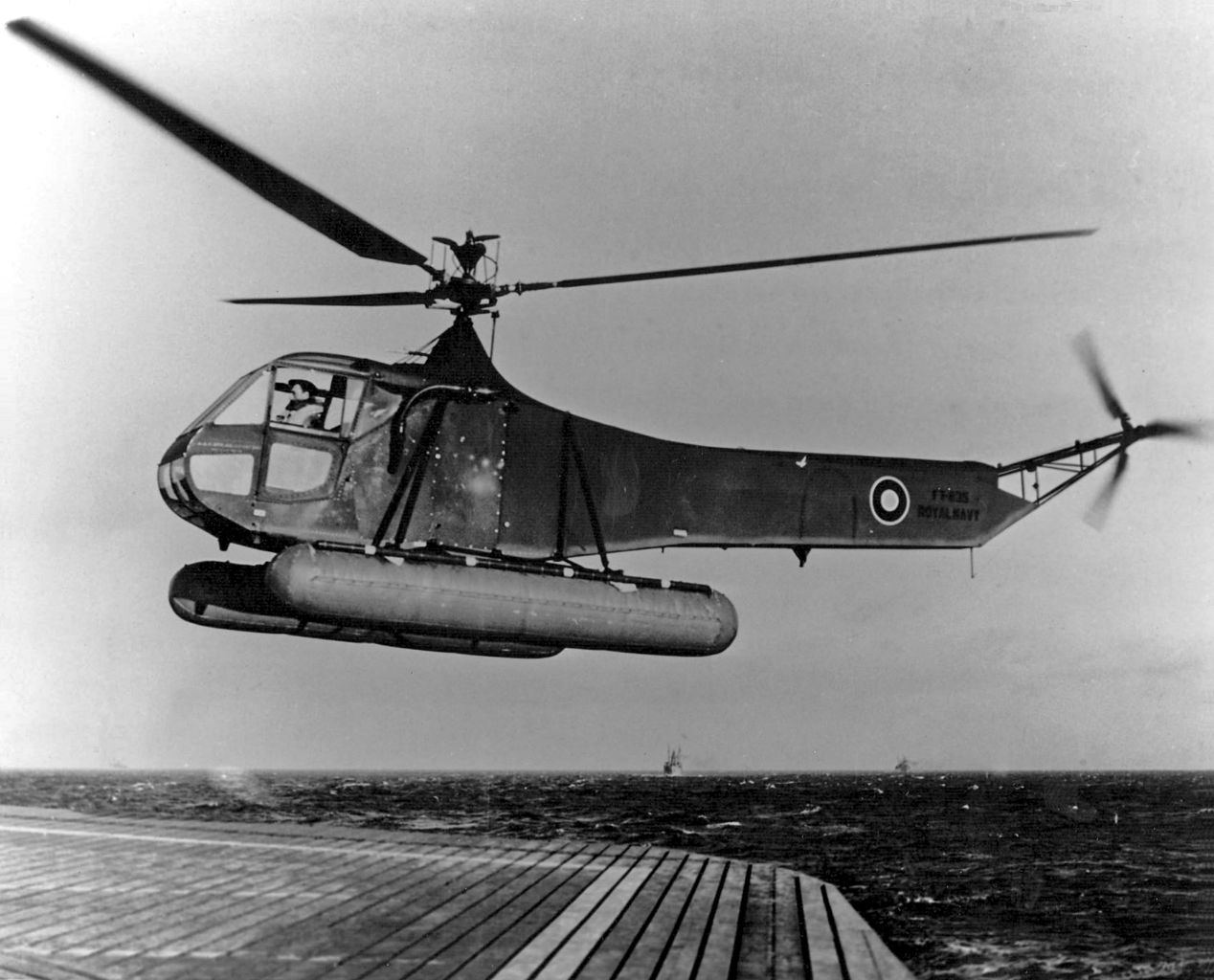
A Sikorsky R-4 operates off of a ship
Navies had long been interested in rotary-wing aircraft for the obvious reason that they could take off and land vertically, removing the need for flight decks, catapults, craning aircraft out of the water, and all of the other hassles that went with fixed-wing aviation. In 1931, the USN had evaluated the Pitcairn XOP-1 autogyro, a sort of airplane-helicopter hybrid that used an unpowered rotor to generate lift. The XOP-1 was operated from the carrier Langley, but ultimately rejected as having insufficient range and payload to be useful. Several more attempts were made over the next decade, but autogyros, which were unable to hover, were simply not satisfactory, and interest turned to craft with powered rotors. The British made the first serious attempt at building one of these in 1938, when they issued Specification S.38/22, for a naval ASW helicopter. The competition was won by the Cierva Autogiro Company with their C.41 Gyrodyne design. The gyrodyne used a powered rotor for takeoff, landing, and hover, but was propelled by a conventional engine in level flight. However, the project was cancelled in 1940 due to other pressures, and rotary-wing naval aviation properly began in 1942, when the Germans conducted trials of the Flettner Fl 282 on the light cruiser Koln. A year later, the Americans began trials with the Sikorsky R-4 under the aegis of the Coast Guard. The German efforts never bore fruit, and Allied helicopters saw only very limited operational service during WWII, focusing primarily on search and rescue, a role that they obviously excelled at.
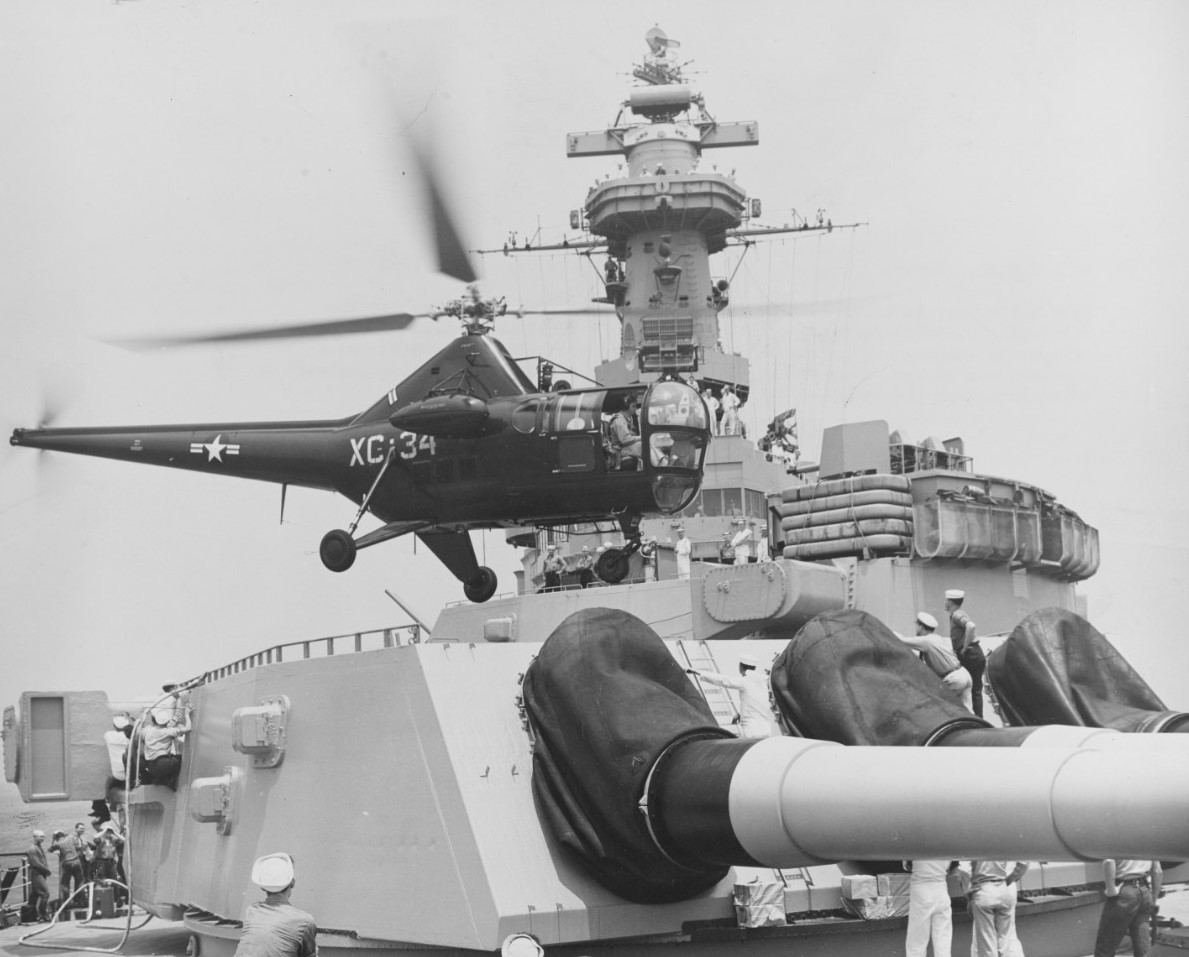
An HO3S on Missouri
The first helicopter to go aboard a battleship was a Sikorsky HO3S, which operated from Missouri beginning in 1947.3 At the time, Mighty Mo still had her catapults aft, so the only available platform for the helicopter was the top of Turret I. This was obviously an interim arrangement, as firing either turret would probably have ripped apart the fragile chopper, and Turret II couldn't even be traversed from side to side with the helicopter in place. The obvious solution was to remove the catapults and use the stern, although a definite decision to this effect didn't take place until 1949. On April 5th, the final cuts were made, with the changeover to take place by June 30th, and ships going through the yards after this generally had their catapults removed, although some lost only one. This meant that Alabama survived with one of her catapults still intact, while Massachusetts lost both of hers.
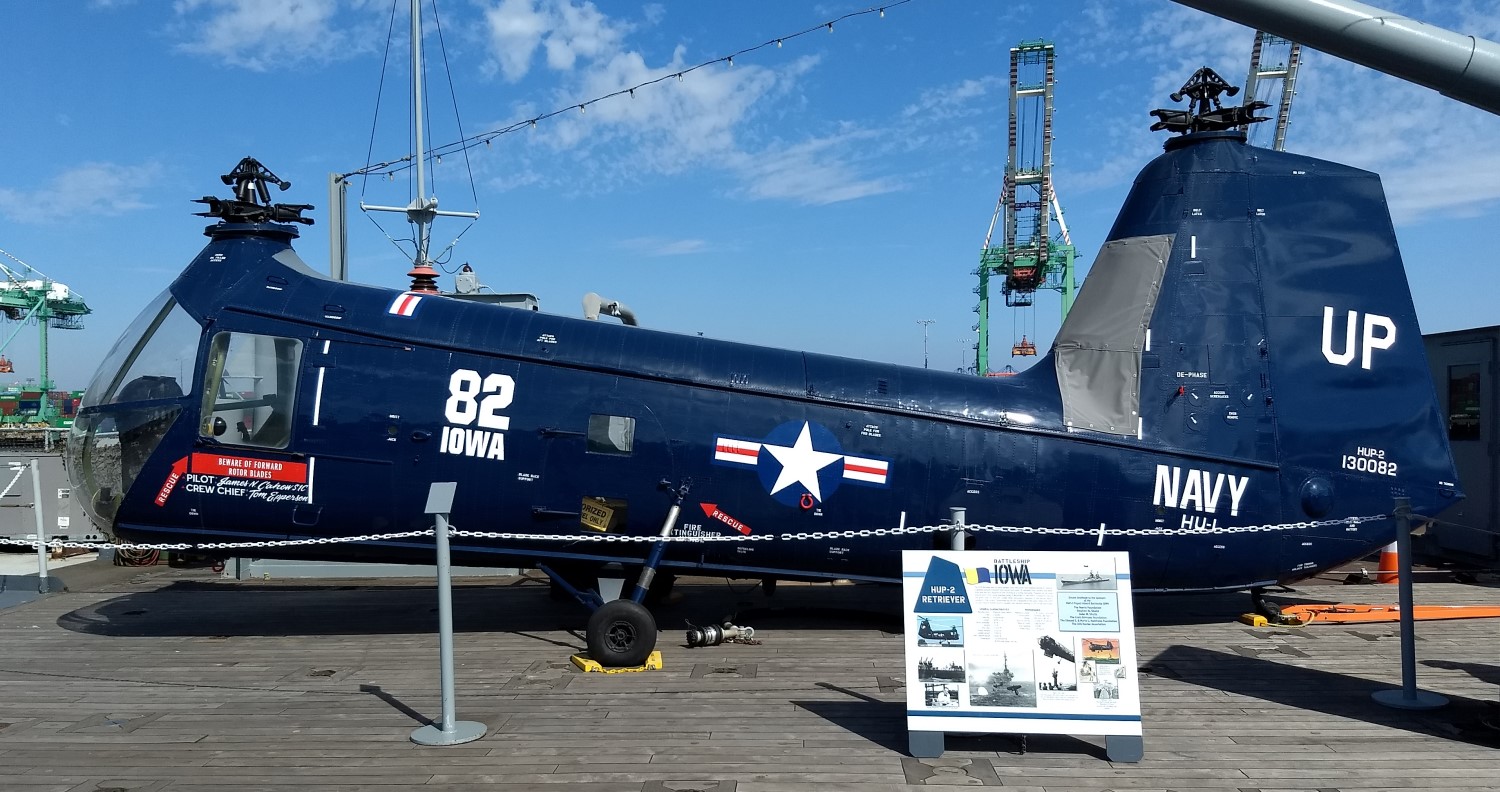
An HUP on display on Iowa today4
During the 1950s, the Iowas each usually carried a pair of helicopters aft, initially HO3Ss, but later Piasecki HUP Retrievers. They were used for the traditional spotting missions over Korea, although their vulnerability to AA fire meant that they had to stay close to the coasts. They also ferried passengers around, and even took part in plucking downed pilots out of harm's way. Today, Iowa has an HUP-2, restored by a team of volunteers, on display to commemorate this often-overlooked era of surface-ship aviation.
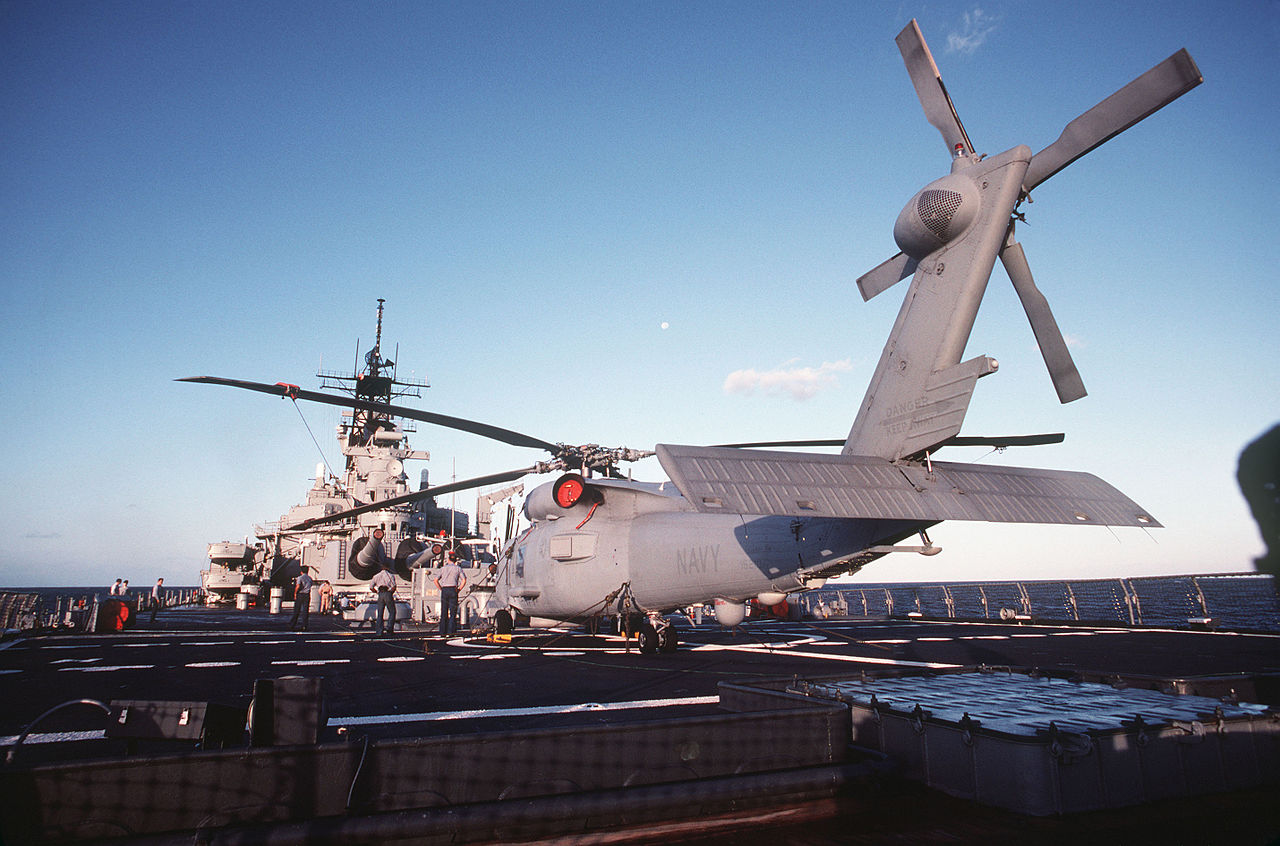
SH-60B on Iowa, 1985
During the 1980s reactivation, the ships were given the capability to operate most naval helicopters in the US inventory, including the H-1 Iroquois, the SH-2 Seasprite, the H-53 Sea Stallion and the SH-60 Seahawk. This included refitting the ship with fuel tanks and a fuel-handling system for jet fuel,5 as well as removing a large area of teak and replacing it with nonskid. However, the lack of a hangar and other support facilities meant that none of the ships was ever assigned a permanent helicopter detachment. Much of this gap could be filled by the proliferation of helicopters on other surface combatants, but there was still a need for organic spotting capability, and some other means would have to be found to provide it.
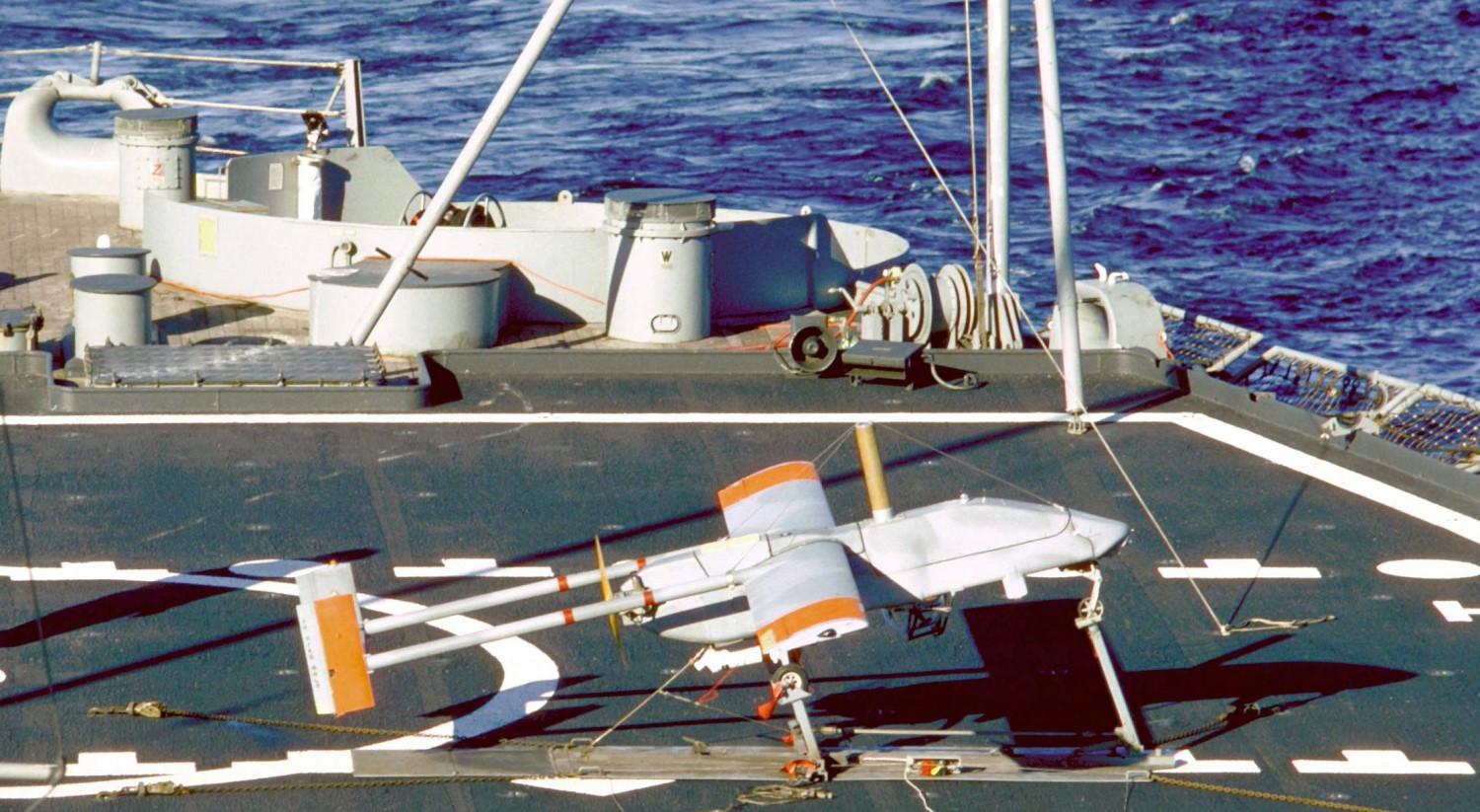
Pioneer on Iowa's stern
It came in the form of what was then known as Remotely-Piloted Vehicles (RPVs), although today they are better known to the public as drones. The Israeli-made Pioneer was first taken to sea aboard Iowa, which conducted the first fixed-wing aircraft operations from a battleship since the 1940s on December 12th, 1986.6 The Pioneer was launched by a rocket booster using a track on the fantail, the booster dropping away after takeoff. After a mission lasting up to five hours with a 75-lb payload, usually including a laser designator and high-quality television camera, it was recovered by being flown into a net. Besides the launch and recovery gear, the Pioneer system was composed of eight aircraft, a portable hangar for them, a fueling system, and one stationary and two portable control systems.7 The initial tests were a success, and Pioneer was soon fitted to the other three ships as well.
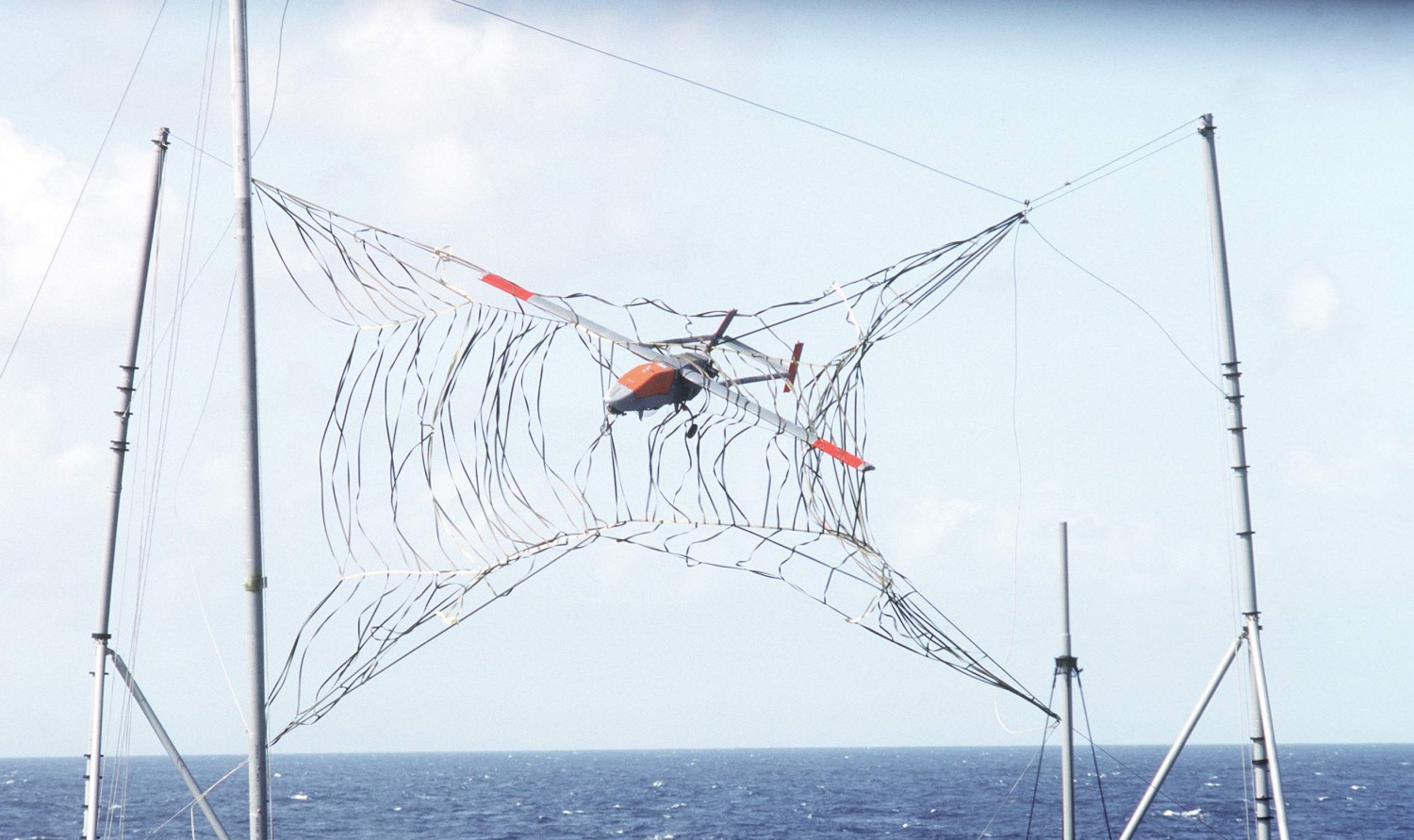
Pioneer flies into the recovery net aboard Iowa
Pioneer's moment of glory came during Desert Storm. Both Missouri and Wisconsin had the system when they went to fight Saddam, and they used their drones extensively to spot for their gunfire. Missouri’s crew hooked the feed from the RPV into her internal TV system, and crews who were off-duty during shoots would wait a minute or so after the guns fired, then switch channels to see the shells impact. One of her Pioneers was shot down by ground fire, a problem dealt with by simply launching another one. One of Wisconsin’s aircraft made history on March 1st, 1991. It was flown low over Iraqi troops on Failaka Island that had recently been bombarded by the battleships. When they heard the whine of the Pioneer's engine, the Iraqis spilled out frantically waving any white objects they could find. It was the first (and possibly only) time that troops had ever surrendered to an unmanned aircraft, and the Pioneer in question was later transferred to the National Air and Space Museum.8
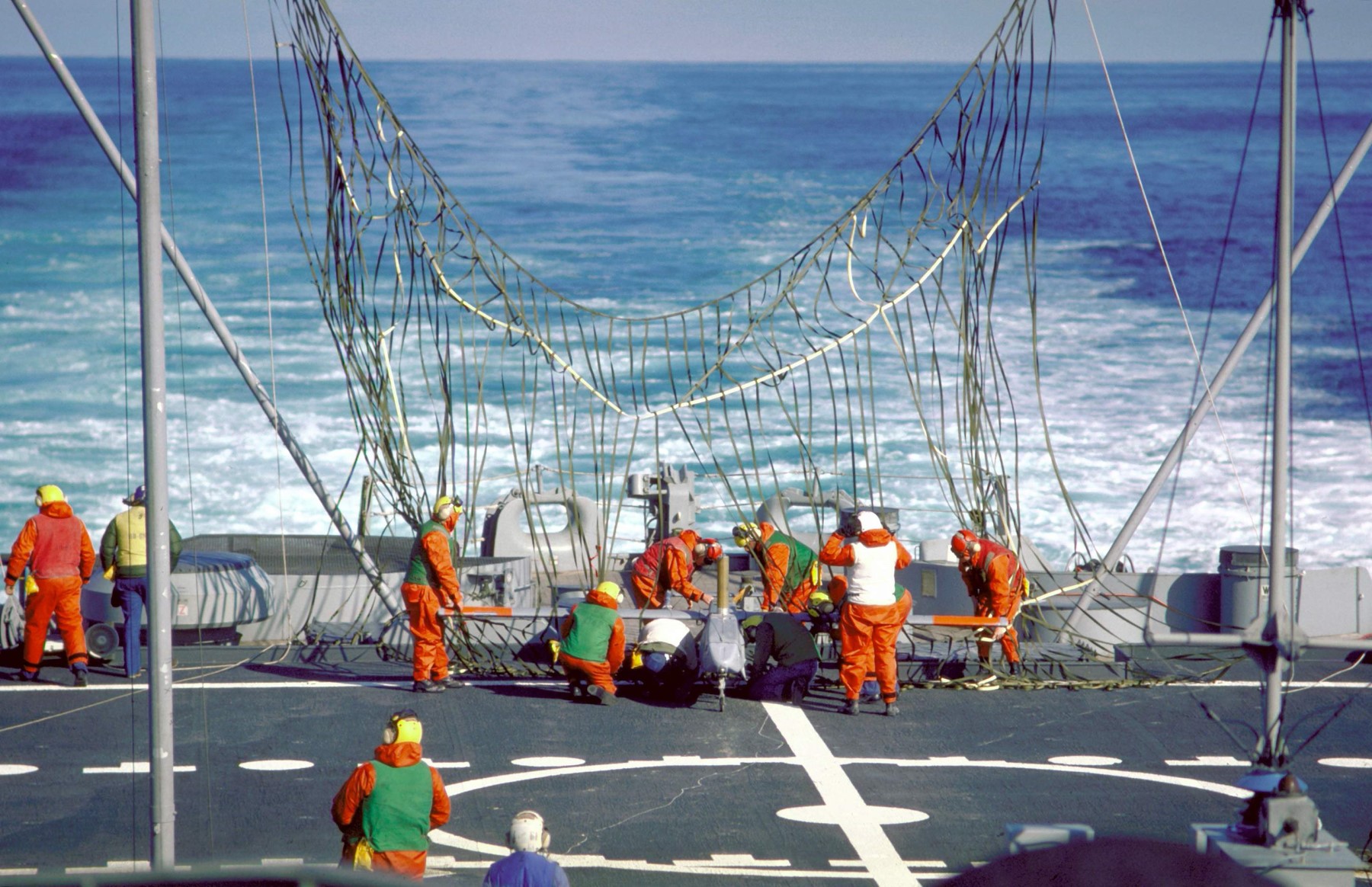
One of Iowa's Pioneer being retrieved from the net.
The collaboration between battleships and airplanes, from the earliest days to the 1980s, is little-known, but played a vital role in the evolution of both naval aviation and the battleship itself. Battleships took some of the first airplanes to sea, and then used the airplane to extend gunnery range in the interwar years. During WWII, battleship-based seaplanes expanded into new roles, most notably rescuing downed pilots, as well as spotting shore bombardment. The last role proved the most enduring, as helicopters and later drones were brought aboard to fill it, the Pioneer in particular paving the way for the modern proliferation of unmanned aircraft appearing aboard ships.9
1 Late-war fire control radar could not only see the target, it could also see shell splashes. This let the fire-control party walk their salvos onto the target up to maximum gun range without having to mess around with airplanes. ⇑
2 No other navy appears to have made any serious attempt at the use of helicopters aboard its battleships. There were a few cases where a helicopter landed aboard Vanguard, but those were to transfer cargo. I could find no trace of helicopter use aboard Jean Bart, the other major non-US candidate. ⇑
3 This is not a statement I have strong confidence in. The early days of the naval helicopter are surprisingly poorly documented, and the operation from Missouri was the earliest I could find in available references. ⇑
4 My photo. ⇑
5 Previous helicopters had been powered by piston engines, and used the same sort of avgas as the seaplanes had. ⇑
6 There's an asterisk to this claim. At various points during the 50s, some of the battleships carried catapults for target drones and flew them off. I'll still claim those don't count because the drones in question were never intended to be recovered. Also, crew rumor has it that the initial drone operations were done with Pioneers that were technically still owned by Israel, which resulted in a minor diplomatic flap when they lost one. I have no way of knowing if this is true. ⇑
7 I'm not sure why there were two portable control systems. Presumably they considered operating them detached ashore, but I don't believe this was ever done. ⇑
8 I ran across a claim by a so-called defense journalist named William Arkin that the Pioneer was out of control and later crashed, so the whole thing was unintentional. This is based on reports from 1992 in a book published only a few years ago, and is sufficiently contradicted by the presence of the Pioneer in the Smithsonian. Of course, Arkin also believes the battleships were sent to bombard the Kuwaiti coast primarily to use up shells so the Navy didn't have to dispose of them. The mind boggles. ⇑

Comments
Really good stuff here Bean. A great continuation in the series. Good work.
I've seen claims that the Germans flew Flettner Fl 282 helicopters from ships (though AFAIK only from cruisers and minelayers, not from battleships). I don't know exactly how common this was operationally- the first test was apparently in 1942.
They also had manned rotor-kites towed by U-boats, and there may have been plans to equip U-boats with folding helicopters!
@Neal
Thanks. This series in particular is over, but I'll come back to naval aviation in general at some point.
@AlphaGamma
Naval helicopter history isn't well-documented, and my primary source, A Century of Carrier Aviation by David Hobbs, doesn't mention the Fl 282, and starts from the R-4. Nor does the Naval Helicopter Association Historical Society, although they seem to have stolen their timeline from a US naval aviation history site. But some research shows that they do seem to have run trials with that in 1942. The lack of information on the German trials makes me suspect that either they had really serious problems or the records were destroyed.